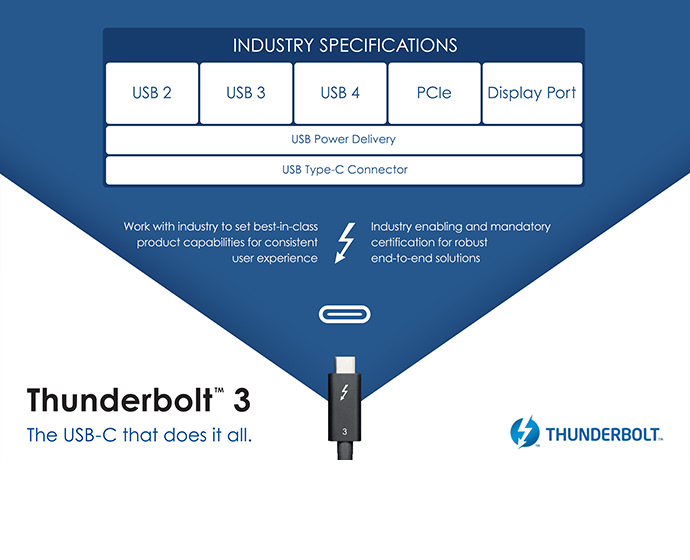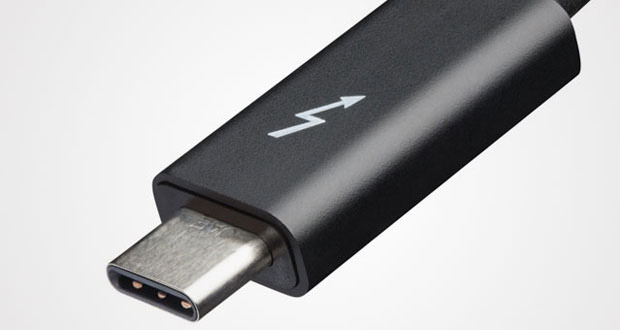USB 4: Twice the speed compared to USB 3.2 and Thunderbolt 3 integrated.
A new USB specification is coming. It will allow us to achieve twice the speed of today’s most advanced standard and native Thunderbolt 3 integration possible thanks to Intel’s technology licensing.
USB Promoter Group has announced the arrival of a new release of the USB specification, with the innovations that follow at a very short distance the presentation of the USB 3.2 standard. USB4 was created following Intel’s decision to open licenses on Thunderbolt technology, and the USB and Thunderbolt specifications converge within a single standard. As a result, we could see a wider spread of Thunderbolt-based peripherals, such as external docks and GPU, which will become cheaper.
USB 4 will be based on Thunderbolt and will support a variety of features, including a data-transfer capacity of around 40 Gbps, so twice as much as the more recent USB 3.2, and can be used to drive video streams or to recharge devices.
 The exact specifications will be released in the coming months, with the expected timing by mid-2019. It is important to note that the new interface will be based on the USB Type-C connector and will be backwards compatible with the USB 2.0, USB 3.2 and Thunderbolt 3 interfaces.
The exact specifications will be released in the coming months, with the expected timing by mid-2019. It is important to note that the new interface will be based on the USB Type-C connector and will be backwards compatible with the USB 2.0, USB 3.2 and Thunderbolt 3 interfaces.
To achieve maximum performance it will be necessary to use certified cables for 40 Gbps operation, and at the moment about 50 companies are working on the new protocol. The easiest way to see USB 4, today is to do it as if it were a Thunderbolt 3 open to all producers for free, without the need to pay royalties to Intel. Thunderbolt 3 will still be offered by Intel as a separate technology, but the advantages will be only in terms of support for technical problems.
With the contribution of the Thunderbolt 3 standard, USB4 should be able to bring its advantages even on the cheapest PC platforms, allowing more manufacturers to take advantage of the standard and use the USB Type-C connector for the vast majority of peripherals with the aim of abandoning the oldest standards. Based on the Thunderbolt 3 features it is easy to assume that even USB4 will be able to handle, on the display side, two interfaces up to 4K resolution, or a single 5K interface.
Although the final specifications will be released in mid-2019, it is very likely that we will not see the first USB 4 peripherals before 2020 or even before 2021 according to the current plans of the USB Promoter Group.

